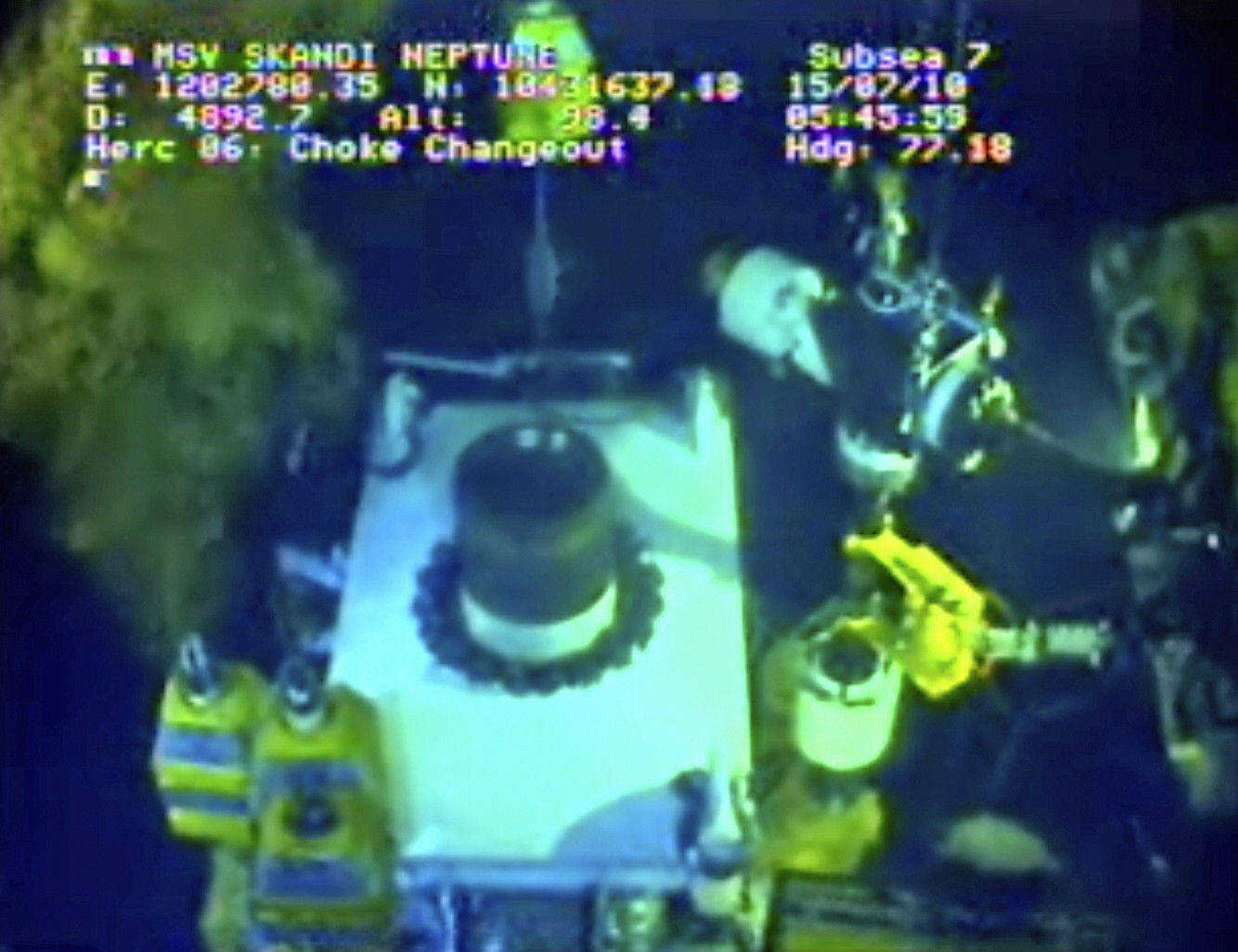BP: No oil leaking into Gulf from busted well
NEW ORLEANS (AP) -- A tightly fitted cap was successfully keeping oil from gushing into the Gulf of Mexico for the first time in three months, BP said Thursday. The victory -- long awaited by weary residents along the coast -- is the most significant milestone yet in BP's effort to control one of the worst environmental disasters in U.S. history...
NEW ORLEANS (AP) -- A tightly fitted cap was successfully keeping oil from gushing into the Gulf of Mexico for the first time in three months, BP said Thursday. The victory -- long awaited by weary residents along the coast -- is the most significant milestone yet in BP's effort to control one of the worst environmental disasters in U.S. history.
Kent Wells, a BP PLC vice president, said at a news briefing that oil stopped flowing into the water at 2:25 p.m. CDT after engineers gradually dialed down the amount of crude escaping through the last of three valves in the 75-ton cap.
"I am very pleased that there's no oil going into the Gulf of Mexico. In fact, I'm really excited there's no oil going into the Gulf of Mexico," Wells said.
The stoppage came 85 days, 16 hours and 25 minutes after the first report April 20 of an explosion on the Deepwater Horizon oil rig that killed 11 workers and triggered the spill.
Now begins a waiting period to see if the cap can hold the oil without blowing a new leak in the well. Engineers will monitor pressure readings incrementally for up to 48 hours before reopening the cap while they decide what to do.
Though not a permanent fix, the solution has been the only one that has worked to stem the flow of oil since April. BP is drilling two relief wells so it can pump mud and cement into the leaking well in hopes of plugging it for good by mid-August.
BP has struggled to contain the spill and had so far been successful only in reducing the flow, not stopping it. The company removed an old, leaky cap and installed the new one Monday.
Between 93.5 million and 184.3 million have already spilled into the Gulf, according to federal estimates.
Connect with the Southeast Missourian Newsroom:
For corrections to this story or other insights for the editor, click here. To submit a letter to the editor, click here. To learn about the Southeast Missourian’s AI Policy, click here.








